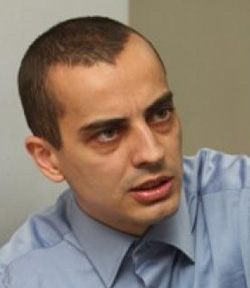There are around 2,000 monuments, sculptures and bas-reliefs in Sofia, commemorating outstanding individuals and significant events. Some we pass by every day and know well, others we are not aware even exist. Until recently any information about their history and what they stand for was scattered and had to be gleaned from all kinds of different sources. Now, there is one place it can be found online – www.registersofia.bg.
The project was carried through by Sofia municipality, in conjunction with the Regional Museum of History, Sofia. At this time the register includes more than 200 sites in all parts of the capital city, all of them part of Sofia’s history and the data base is constantly being added to.
More about the project from Sofia Deputy Mayor for education and culture Todor Chobanov:
 “The history of the city is more than its streets, their names or the squares, there is the vitally important question of our monuments. Sites that are a reflection of our historical memory, a reminder of landmark events and individuals, places and artistic elements that play a vital role in the collective memory of Sofia. By force of the amendments to the ordinance for naming and renaming municipal locations, our Regional Museum of History was tasked to compile a single register of all monuments and artistic elements. The aim of the register is to provide easy–of-access information about them – where they are, what they are like, who their author is and what their status is. That is an enormous amount of work. About a year ago the museum’s archives contained information about 500 sites or so, but by including the so-called artistic elements, their number will increase significantly.”
“The history of the city is more than its streets, their names or the squares, there is the vitally important question of our monuments. Sites that are a reflection of our historical memory, a reminder of landmark events and individuals, places and artistic elements that play a vital role in the collective memory of Sofia. By force of the amendments to the ordinance for naming and renaming municipal locations, our Regional Museum of History was tasked to compile a single register of all monuments and artistic elements. The aim of the register is to provide easy–of-access information about them – where they are, what they are like, who their author is and what their status is. That is an enormous amount of work. About a year ago the museum’s archives contained information about 500 sites or so, but by including the so-called artistic elements, their number will increase significantly.”
There are many reasons why there has been no such register thus far, one of them being the fact that the so-called artistic and decorative elements have now been included in the list, as they are part of the urban landscape. Some of the monuments and plaques have been put up for reasons which seem unclear, or the author is anonymous. One such example is the sculpted head of a Bulgarian khan in front of an apartment building in Lozenets residential area, of which nothing is known.
Museum workers say they are hoping to be helped by volunteers and interns in collecting the information about the authors of the monuments more quickly.
Any members of the public who have photographs or information about a given monument can also contribute. For now, the website is only in Bulgarian, but once a sufficient amount of data has been collected about the sites, an English-language version is planned.
English version: Milena Daynova
He does not accept the definition of "apostle" or "missionary", although for many he is exactly that - a messenger of God in the world, proclaiming His Word. He first became a priest in his native Vidin diocese, in Northwestern..
Over 80% of Bulgarians are expected to start using artificial intelligence in the next three years , across all age groups. Today, it is almost impossible to find a Bulgarian student who does not turn to ChatGPT when preparing homework. This..
Serbians around the world mark one year after Novi Sad tragedy On November 1, Serbians abroad will join the call of students in Serbia to mark the anniversary of the collapse of the canopy of the Novi Sad railway..
Under the motto "Responsibility, Unity and Security" on November 5 and 6, 2025, a German-Bulgarian seminar for journalists and public..
Everyone knows that as soon as temperatures start going down it is pickle-making season. Making preserves at home is a time-honoured and widespread..
The European Commission praise s Montenegro’s progress toward EU membership North Macedonia needs decisive action and reforms to begin..

+359 2 9336 661
